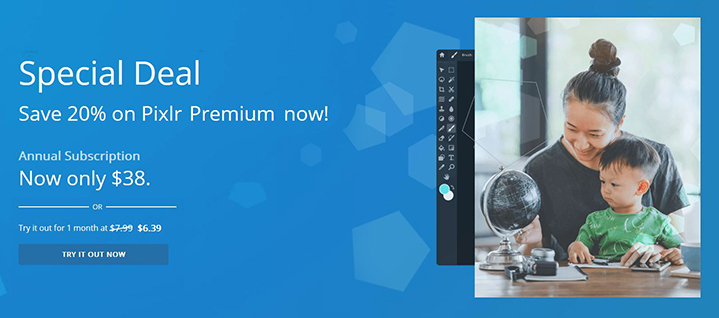There are any number of times when it is helpful to crop an image, add captions to it, or even create a simple text-based graphic. Most of us don’t need – or want – to learn a complex piece of software like Adobe Photoshop for performing such tasks. (Though more power to you if you happen to have the chops to use these tools effectively.)
Here are a some less expensive and, for the most part, dramatically less complex options for image and photo editing software to use in the creation and marketing of your educational products:
Web-based Image and Photo-Editing Software
These are all image and photo editing tools you can use in any Web browser. The big upside is that you don’t have to install software or worry about updates. The downside is that you need an Internet connection to access them and/or take full advantage of their features.
- Pixlr (free; $4.90 per month with annual subscription) – very powerful!
- Canva (free basic; $12.95 per month) – our “go-to” tool for social media images
- BeFunky (free basic, $4.95 per month)
- PicMonkey (free basic version; $2.75-$499 per month)
- Vectr (free software for creating vector graphics; online and desktop versions available)


Desktop Image and Photo Editing Software
If you prefer to install software, there are plenty of good and reasonably priced options.
Stock Image and Photo Sources
Of course, you can also license images (sometimes for free, sometimes for a fee) from a number of sources, including:
- Pixabay: One of the most popular sites for free images. We use a lot of these on Learning Revolution.
- 123RF: Also the makers of Pixlr, and the main source we use for images on Learning Revolution
- iStockPhoto: Photos, images, and video clips with licenses starting at few dollars per image.
- Flickr Creative Commons: Photos and images made available by users of the popular Flickr photo sharing service.
- Stock.XCHNG: Stock.XCHNG is a free stock photography site (though it was recently acquired by Getty Images, so we’ll see how long it remains free).
- WikiMedia Commons: A database of more than 15 million freely usable media files.
The links on this page go along with The Learning Revolutionary’s Toolbox, a free eBook.
If you have questions, or want to share your own experiences with any of these tools, please comment below.
I’m planning a Introduction to Film Studies online course and would like to use music, images and excerpts from movies as examples. Are there copyright issues connected with usage in my course?
Most likely. You can rely on the concept of “fair use” to a certain extent, but if you are using clips and images extensively throughout the course, I think there is a pretty good chance fair use will not cover you totally. (The Wikipedia article on fair use is pretty decent: https://en.wikipedia.org/wiki/Fair_use) The safest route is to either get any necessary permissions from the copyright owners (in writing), whether directly or through whatever channel they use to license rights to the works (e.g., Getty). That can be quite a bit of work, so it is also best to assess where it is that you REALLY need to use copyrighted materials. All of that said, I am not a lawyer and I don’t even play one on TV. This is an area in which it would be well worth the expense involved to get a reliable legal opinion. – Jeff